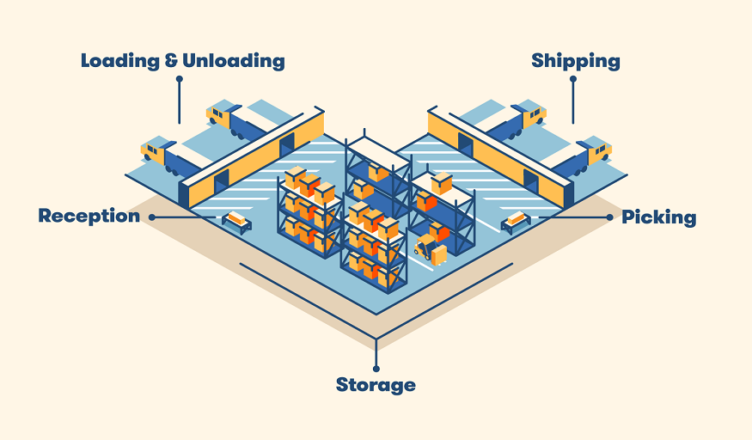A warehouse dock is an essential piece of warehousing equipment that facilitates trucks’ efficient entry and exit. However, when dock operations are slow and inefficient, it can result in cargo damage, lost productivity, and on-site accidents.
Efficient storage with loading dock minimizes truck and lift truck damage, increases productivity, and meets schedules. There are five main types of ports:
Enclosed Docks
If you want to increase warehouse efficiency, consider implementing a conveyor system. These systems make it easier and safer for employees to move cargo in and out of trailers or trucks, and they can be customized to meet your specific needs.
Dock bumpers are another safety piece of equipment that protects your warehouse from damage caused by vehicles or trailers. They are padded with heavy-duty rubber and designed to absorb impact. They are also a great way to improve employee safety and reduce dock injuries.
Sectional dock doors are an excellent option for a low-maintenance, energy-efficient, and easy-to-operate warehouse dock door. They are available in various sizes and can be insulated to improve energy efficiency further.
Flush Docks
Choosing the right warehouse dock layout improves space utilization, accessibility to individual loads, and order fulfillment speed. It also protects your warehouse pallet racking investment and reduces damage.
The best type of dock for your facility is one that allows trucks to drive up and back off with minimal obstructions. This ensures efficient operation and minimizes truck-to-dock transfer time.
Sawtooth line-ups allow dock doors to be positioned so the trucks are lined up as they enter and leave the dock. They are a great choice when maneuvering spaces are limited and are typically used by manufacturers with commercial outputs.
Regardless of the type of dock you choose, it’s essential to regularly check that the approaches are free from debris and hazardous material. This will help avoid accidents and injuries. For example, it’s a good idea to paint the edge of your dock bright yellow to make it easier for workers to see and identify.
Open Docks
When it comes to warehouse docks, there are several different types that you can choose from. These include flush docks, open docks, and cantilever docks. Each type has its own unique set of benefits and drawbacks. To decide which type of dock is best for your warehouse, consider your needs and budget.
Flush docks are simple openings in the warehouse wall at a truck height that allow forklifts and other equipment to drive directly onto them. They are more efficient than open docks because they eliminate the need for truck drivers to open and close the door every time they enter or exit the building. However, they don’t offer as much protection from the weather or theft.
Using the proper hardware and software to manage warehouse dock operations can increase productivity, improve safety, and lower energy costs. But it can take time to determine which solution is right for your company. Nevertheless, like oil prospectors drenched in bubbling crude, material handling professionals can discover barrels of value by modernizing dock operations and management.
Custom Docks
In a warehouse, manufacturing plant, or distribution center, the storage with loading dock is where trucks load and unload freight. It increases space utilization, accessibility to individual loads, handling speed, and protecting goods from damage. It also reduces transportation costs by easing the burden on carriers and making storing and retrieving products easier.
As oil prospectors drenched in bubbling crude, the materials handling professionals at a Midwest third-party logistics (3PL) warehouse discovered barrels of value when they modernized their dock operations. Now managers using a dock management system oversee appointments, monitor dwell times, and keep docks fully used — gaining better control of detention and demurrage charges, fuel costs, and shipping accuracy.
The intelligent equipment that makes up the dock management system collects data in real time, so managers can review performance on a centralized dashboard and make data-driven decisions to improve safety procedures, productivity, and energy consumption. They can also access analytic reports that compare current and historical performance to influence the next steps.

